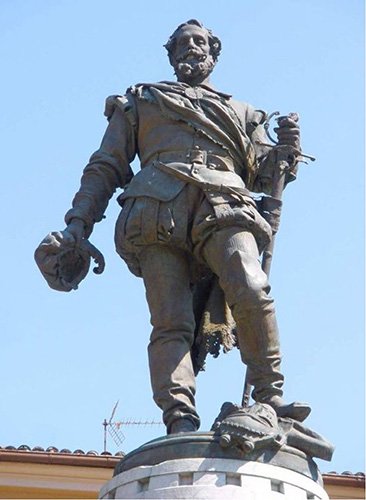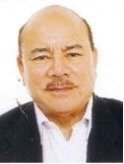An Exchange Student’s Nostalgic Trip After 50 Years: Part 3 - Revisiting Spain
/San Sebastian’s Monte Ulloa, showing the maritime past and geographic configuration of the land and its sturdy people.
So, with that paradox in mind, I wanted to visit and stay in Spain, then still ruled by Generalissimo Francisco Franco. My nostalgic trip 50 years hence was now to a democratic Spain under a Constitutional monarchy and a full and vital member of the European Union.
The Spain that I knew way back in 1973 still remembered the Civil War of 1936-39. Guardias civiles or policemen wearing gleaming black patent leather hats (as in a Goya painting) still patrolled the streets. Madrid’s main street, the Gran Via, was renamed after a hero, Jose Antonio, much esteemed by the Franquistas. Unrest prevailed in the Vascongadas, or Basque country, where they were forbidden to talk about the past (like the bombing of Guernica, which inspired Picasso’s painting) or even teach their language to their children in their schools. The assassination of the Prime Minister Admiral Luis Carrero Blanco, on December 20, 1973 by the ETA or Basque separatists alarmed those who had lived through the Spanish Civil War.
But Spain turned a corner when democracy was reestablished there in the ‘80s, when I no longer lived there.
The majority of Filipinos in Spain were now service workers instead of the students pursuing courses in Spanish, or teaching English to schoolchildren and businessmen, as in my time. A Filipina, Isabel Preysler, also dubbed “la China” by Hola magazine, had ascended the highest ranks of Spanish society by successively marrying a pop star, an economic minister, and a nobleman; her last partner was a famous Peruvian Nobel Laureate for Literature. The Philippines had finally got its own back when a Filipino businessman bought the Spanish enterprise that produced Emperador brandy. Arguably, a Filipino flag could fly informally over its vineyards.
Unlike in my earlier stay in Madrid, where I had a job teaching English as well as a place for studies at the Filipino program of the Instituto de Cultura Hispanica, I now aimed simply for San Sebastian in Basque Country and very near the border with France. Though the Basques occupy a tiny part of Spain, they played a major role in its exploration of other lands and, in the case of the Philippines, in its economic and social history. Sebastian Elcano, Urdaneta, Legazpi, Azcarraga, Ayala, Elizalde and Araneta are only a few of the Basque names that ring bells in the national narrative. As I had gone to a Jesuit school myself, Ignacio Loyola and Francisco Xavier were also another point of connection.
The Basques had reestablished themselves in the post-Franco years, with political unrest a footnote in this green, fertile and industrially productive land. Their native language, Euskera, which had preceded even the Romans and had been suppressed by the Franco government, was now taught freely in the schools and recognized officially by the central government. It is fascinating to think that a language which has no Indo-European roots has somehow managed to flourish throughout the ages and that one of the Basque sports, Jai Alai, took root in the Philippines as well. This might be a clue to how the Philippines could keep its languages and culture alive despite the challenges of globalization.
San Sebastian, or Donostia, combined cosmopolitanism with the familiarity of a small town. It had once hosted royalty and nobility during their summer breaks; it was now known for its gastronomic offerings and the yearly International Film Festival, which took place in a splendid postmodern building on a spacious esplanade. This avant-garde openness may also be seen in neighboring Bilbao, whose Guggenheim Museum built by Frank Gehry is another jewel in this territory.
What better place then to explore the Fil-Hispanic connection than this Northwestern corner of the Iberian peninsula? I was armed with a tiny pocketbook on the Fiesta Food of Spain and relatives who were firmly ensconced in San Sebastian. Moreover, they also knew Juan Mari Arzak and his daughter, Elena, chefs of the world-renowned restaurant where I had once dined years ago.
Chef Juan Mari Arzak with admirer at his Michelin-starred restaurant in San Sebastian
Rather than Madrid or Barcelona, which are the metropolitan cities most familiar to Filipinos, it was refreshing to approach Spain from the smaller perspective of the province, since this country (like the Philippines) has so much to offer from a tinier periscope—Santiago de Compostela, perhaps; or Segovia, Valencia, Sevilla or even the Canary Islands. Though Spain is indeed a peninsula, islands of culture survive in it.
But first, San Sebastian, the biggest city of the province of Guipuzkoa, known as the heart of Euzkadi, or Basque country. It has been described as a city of three mountains, three beaches, one island and a river. One might choose to ascend Monte Urgull, to catch a panoramic view of the city; visit the Parte Vieja, or the old city, with a typical market like La Bretxa; stroll along the Playa de la Concha with its typical barandillas or grillwork; sample the pinchos or appetizers at typical bars; or enjoy the magnificent architecture of the Cathedral, the Plaza Gipuzkoa and the Hotel Maria Cristina.
One might also visit the Tabakalera (just as in the Philippines), which was a former tobacco factory converted in 2015 into a center for contemporary art. Its rooftop restaurant offers a marvelous view of the city with its swans and peacocks in a park below.
San Sebastian, however, is only the beginning. Still other points of interest within reach by car or train are: Zumarraga, city of Miguel Lopez de Legazpi; Getaria, birthplace of Juan Sebastian Elcano and designer Cristobal Balenciaga (for whom there is a dedicated museum); Igartubeiti, featuring a wooden house preserved from the 16th century which still manufactured apple cider until recently; Tolosa, which features metal sculptures by such Basque masters as Eduardo Chillida and Jorge Oteiza; and of course, Loiola, for the Jesuit founder.
Adelantado Miguel Lopez de Legazpi, on whose monument in Zumarraga,Spain, the cities of Cebu and Manila are noted. His refounding of Manila as a Spanish capital in 1571 officially began Spanish rule in the Philippines
Guipuzkoa has been described as “a restaurant of 1,909 square kilometers where cuisine is an essential part of life and culture.” The Basque Culinary Center is deemed part of the University Faculty. The Basques boast that within a radius of 25 kilometers is the highest concentration of Michelin stars in Europe--as many as 19. For not only is there the famous Arzak, but also the chefs Pedro Subijana, Martin Berasategui, Andoni Luis Aduriz, Daniel Lopez, Aitor Arregi. Ruben Trincaso and Mikel, Kepa and Gorka Txapartegi.
It begins with the good basic cuisine of the grandmothers, from whose cooking derive fresh bread, fish recognizable to Filipinos such as the besugo; unique cheeses such as the Idiazabal; cider and the white wine called txakoli. These are embellished with preserved chilies known as piperras (guindillas) de Ibarra and punctuated by desserts of exotic names such as pantxineta donostiarra; rellenos de Bergara and Ignacios de Azpeitia. A Museum of Chocolate in Tolosa attests to the fact that cocoa products have deep roots here as well and sweets are a part of the repertory.
Bread, cheese tortilla and coffee as breakfast the way grandmother served it.
Chef Juan Mari Arzak, who came from a family which owned traditional restaurants in San Sebastian, is quoted as saying that from his mother he learned that “tenderness is the big secret of cuisine” or “el cariño es el gran secreto de la cocina.”
It is a Basque formula that sounds appropriate to pass on to another country like the Philippines, with its own tongue-twister languages, which venerates old people, has fought unceasingly for autonomy and independence, is possessed of a varied and deep culture and endowed with a rich cuisine now on the verge of discovery by other peoples. Sikatuna and Legazpi were indeed blood brothers!
The lesson that I have learned and brought back from my last odyssey to Iberia is that there are many Spains, remembered and experienced—the castles and wide central plains of Castille, the rugged mountains of the Basque country, the stunning creativity of Catalonia and the Arabic splendor of Andalusia.
Then again, there have always been two Spains, which saw the crucible of a terrible Civil War that we prefigured in the Philippines—the illiberal and reactionary Spain that executed Rizal, and the progressive Spain that prevails today. May the latter’s tribe increase!
A career diplomat of 35 years, Ambassador Virgilio A. Reyes, Jr. served as Philippine Ambassador to South Africa (2003-2009) and Italy (2011-2014), his last posting before he retired. He is now engaged in writing, traveling and is dedicated to cultural heritage projects.
More articles by Ambassador Virgilio Reyes, Jr.







